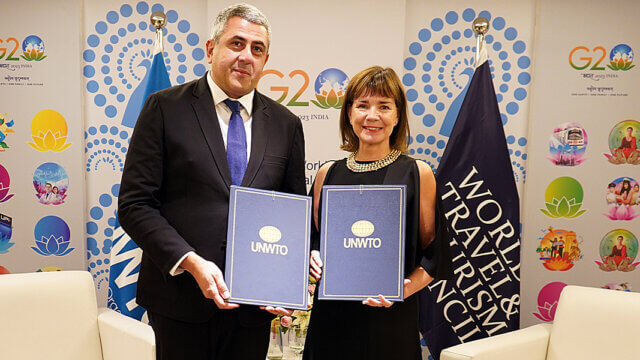INTERNATIONAL REPORT—A ew global index report from World Travel & Tourism Council (WTTC) and JLL, “Destination 2030: Global Cities’ Readiness for Tourism Growth,” has assessed the preparedness of 50 cities for future travel and tourism growth.
Travel and tourism is an essential industry that contributes 10.4% to global gross domestic product and was responsible for the creation of one in five new jobs over the last five years, according to researchers.
“We are delighted to launch ‘Destination 2030,’ our first comprehensive assessment of cities’ readiness for tourism growth, through the development of a unique methodology to evaluate and deliver on solutions to foster sustainable growth in tourism activity,” said Gloria Guevara, president/CEO, WTTC. “Tourism authorities in many major cities around the world are working incredibly hard to prepare for the future. However, for a city to truly thrive and for travel and tourism to develop in a sustainable manner, city planning authorities, developers, investors, legislators and community groups need to understand how prepared the city is for future expected growth in tourism and the resulting challenges and opportunities it may face.”
Cities and city tourism drive both country and sector growth on a significant scale. Cities are global hubs accelerating business, innovation and job creation all around the world. Today, more than half (55%) of the world’s population lives in urban areas, and this proportion is expected to rise to 68% by 2050.
Forecasts show that urbanization and population growth could add another 2.5 billion people to urban areas by 2050. According to research, of the 1.4 billion international visitors crossing borders in 2018 for tourism purposes, 45% are traveling to visit cities. Furthermore, international arrivals to the 300 largest city travel destinations accounted for more than half a billion trips last year.
The newly created index brings together a spectrum of destination practices and community attributes to determine a level and type of readiness. The levels range from emerging to established market tourism hubs with varying levels of infrastructure.
Researchers developed five typologies on the basis of the level of readiness:
Dawning Developers & Emerging Performers
Cities in these categories tend to be in emerging countries, with a lower level of urban readiness. To improve their readiness, efforts should be focused on developing and enhancing urban infrastructure, such as airport connectivity, accommodation stock and addressing environmental issues such as waste and water quality. Examples include Bogota, Colombia; Cairo; Delhi, India, and Istanbul.
Balanced Dynamics & Mature Performers
These represent cities with an established urban readiness and tourism infrastructure, but which are not yet seeing many overt signs of tourism pressure in the comparable data. Based on findings of the research, cities in these two categories are in the most favorable and ready position to manage the current levels of growth. Examples include New York; London; Auckland, New Zealand; Berlin (Mature); and Singapore, Beijing, Osaka, Japan; and Hong Kong (Balanced).
Managing Momentum
European and North American cities such as Amsterdam; Barcelona, Spain; and San Francisco occupy the whole “Managing Momentum” category. These cities have, in recent years, seen high tourism growth momentum, but at the same time have either experienced tourism pressures or are at the risk of facing potential issues.
“Whether a city is looking to bolster its travel and tourism industry or manage growth, the approach needs to be strategic, purposeful and comprehensive,” said Dan Fenton, EVP, JLL. “By considering all components that make up a city’s character, policies that achieve the best possible results for business leaders, community members and visitors can be put into place.”

